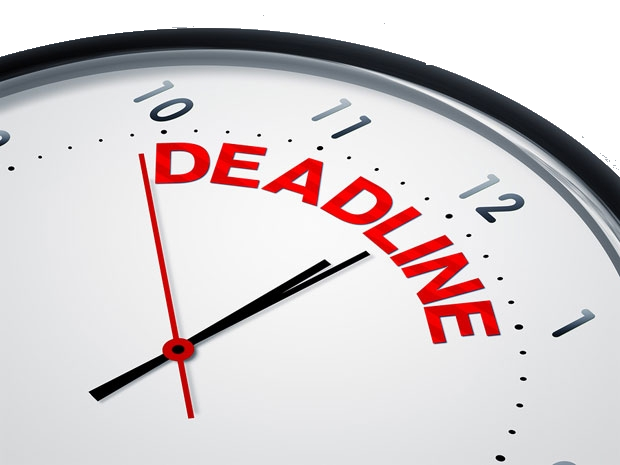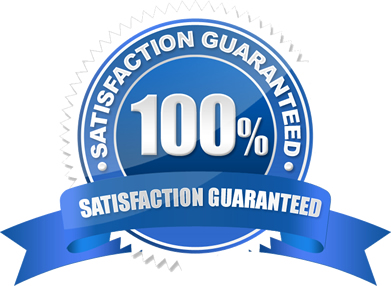Economics test
Economics test
Order Description
Final Exam, ECON 6100: Managerial Economics, Spring 2016, Reza Kheirandish
Due: Wednesday 5/4/2016 before 11:59pm, on Dropbox on D2L.
Part A: Multiple Choice Questions:
1. Which of the following conditions that must be satisfied by a successful price discrimination scheme?
a. The seller must have market power, that is the seller must have some control over price
b. The seller must be able to identify different customer groups with different demand elasticities
c. The seller must be able to prevent arbitrage between the two groups
d. All of the above
2. You’ve just decided to add a new line to your manufacturing plant. Compute the expected loss/profit from the line addition if you estimate the following:
There is a 70% chance that profits will increase by $100,000.
There is a 20% chance that profits will remain the same.
There is a 10% chance that profits will decrease by $15,000.
a. Loss of $15,000
b. Gain of $68,500
c. Gain of $ 71,500
d. Gain of $100,000
3. Suppose that you have 2 buyers. The first buyer values your product at $10, and the second buyer values your product at $6. You estimate that the probability of getting a high valued customer is 40%. Your marginal costs are $3. What is your optimal price and expected profit?
a. Price at $6, Profit = $1
b. Price at $6, Profit = $3
c. Price at $10, Profit = $1
d. Price at $10, Profit = $4
4. An oral auction with values of $4, $6, $9, $12, $13, and $15 is currently taking place. What will the winning bidder pay?
a. 10
b. 11
c. 13
d. 15
5. The demand for insurance arises from people who are:
a. Risk-seeking
b. Risk-neutral
c. Risk-averse
d. None of the above
6. Shoe stores A (blue) and B (red) are considering selling two new styles of designer shoes resulting in the values below. A moves first and selects which style to sell first, and then B makes its selection
What is the equilibrium path of this game?
a. A will choose Black and B will choose Pink
b. A will choose Pink and B will choose Pink
c. A will choose Black and B will choose Black
d. A will choose Pink and B will choose Black
7. Why might a company use an indirect price discrimination scheme versus direct price discrimination?
a. The different customer types shop at different stories
b. The demand for each customer type is the same
c. The different customer types cannot be uniquely identified directly
d. The company can prevent arbitrage between its different customer types
8. Ten bidders in an oral auction have the following values for an antique clock ($10, $9, $8, $7, $6, $5, $4, $3, $2, $1). If bidders of the $10 and $9 bids collude and bidders of the $3, $4, and $5 bids collude what will the winning price be?
a. $10
b. $8
c. $6
d. $5
9. If a tire company knows that customers buying insurance for their tires will increase the likelihood of being reckless, there is a problem of _____________. In order to combat this problem, the tire company should__________.
a. Adverse selection; obtain more information about the customer’s driving record before selling insurance
b. Moral hazard; obtain more information about the customer’s driving record before selling insurance
c. Adverse selection; require the customer to sign a contract that states that insurance does not cover tire repair for reckless driving
d. Moral hazard; require the customer to sign a contract stating that insurance does not cover tire repair for reckless driving
10. Identify the Nash equilibrium in the following game.
Company B
Bargain Hard Comply
Company A Bargain Hard 0,0 10,-10
Comply -10,10 5,5
a. 0,0
b. 10,-10
c. -10,10
d. 5,5
11. When you buy a set of speakers, Best Buy asks if you would like to purchase insurance for your speakers. Assume that paying for new speakers for customers who listen to music at a reasonable level (thus minimizing damage) costs on average $150, and paying for new speakers for customers who listen to music very loudly (more likely to damage the speakers) costs on average $1000. Individual know whether they like music at a reasonable level or at a loud level, but Best Buy can assume that 40% of listeners are reasonable listeners, and 60% are loud listeners. How much does Best Buy have to charge in order to break even?
a. $660
b. $1000
c. $150
d. $575
12. After acquiring a substitute product, to achieve greater profitability, one should
a. Raise price on both products, but raise price more on the less price elastic product
b. Raise price on both products, but raise price more on the more price elastic product
c. Raise price on just the less price product
d. Raise price on just the more price elastic
13. The publisher of an online Economics Primer course is trying to sell the primer to a group of MBA students and a group of EMBA students in the US. The maximum willingness to pay for the primer in each group of students as well as the number of students in each group is given in the table. Assume the marginal cost is $50. Also, assume the publisher does not know who is a MBA and who is an EMBA student.
Willingness to pay Number of students
EMBA $300 1,000
MBA $100 2,000
What is (are) the publisher’s profit maximizing price(s)?
a. Charge $300 to EMBA and $100 to MBA
b. Charge either $300 or $100 (the publisher is indifferent)
c. Charge a uniform price of $300
d. Charge a uniform price of $100
14. Using the same information as above (#13) and assuming marginal cost is negligible, what is(are) the profit maximizing price(s)?
a. Charge $300 to EMBA and $100 to MBA
b. Charge either $300 or $100 (the publisher is indifferent)
c. Charge a uniform price of $300
d. Charge a uniform price of $100
15. Using the same information as above (#13), suppose you still cannot distinguish between the two groups of students. However if you offer a rebate, you know that the EMBA students will never redeem the rebate while MBA students will always redeem the rebate. What is the optimal full price for the Primer and Optimal rebate?
a. Charge $300 for the primer and offer $200 for the rebate
b. Charge $300 for the primer and offer $100 for the rebate
c. Charge $300 for the primer and do not offer any rebate
d. Charge $100 for the primer and do not offer any rebate
Individual Problems:
Please answer all of the following questions.
Chapter 11
Flight to Safety
16) As stock markets have crashed, and uncertainty has increased, consumers move their money to the safest currencies and countries in the world. Predict the effects of an increase in uncertainty on GBP/U.S. dollar exchange rates between 2008 and 2009 assuming that in September, 2008, the British pound was trading at $1.85 and by January, 2009, it was down to $1.35. Specifically, what happens to demand for dollars and what happens to the supply of pounds?
Chapter 12
Pricing Commonly Owned Substitute Products
17) Branded drugs face generic entry by rival drugs that typically take 80% of sales away from the branded drug within three years. This loss occurs because generic drugs are much cheaper than branded drugs, and most insurance companies won’t pay for a branded drug if a generic is available. But in one instance, the branded-drug maker sued the generic entrant for violating its patent. In the settlement negotiations that ensued, the branded-drug maker offered to pay the generic entrant $10 million to settle the patent dispute by staying out of the industry. Why would the branded drug offer to pay the generic drug to stay out of the industry?
Chapter 14
Inter-temporal Price Discrimination
18) Suppose that technophiles are willing to pay $400 now for the latest iPhone, but only $300 if they have to wait a year. Normal people are willing to pay $250, and their desire to purchase does not vary with time. Ignore the time value of money and compute the optimal pricing scheme of the iPhone. Assume that there are equal numbers of each customer type, and that the MC of the iPhone is $100.
Chapter 15
Auditing Game
19) The manager of a corporate division faces the possibility of an audit every year. She prefers to spend time preparing if she will be audited; otherwise, she would prefer to invest her time elsewhere. The auditor, who gets recognized for uncovering problems, prefers to audit unprepared clients. If the players match their actions (i.e., the manager prepares and the auditor audits, or the manager doesn’t prepare and the auditor doesn’t audit), the manager wins with a payoff of 20, and the auditor loses with a payoff of –20. If the actions don’t match, the auditor wins with a payoff of 20, and the manager loses with a payoff of –20. Diagram this game, and comment on the equilibrium. Is there any pure strategy Nash equilibrium?
Chapter 16
Ultimatum Game
20) You are given an offer to split a $20 bill. The other player offers you $1. If you accept the offer, you keep the $1 and the other player keeps $19. If you reject the offer, neither of you will get anything. Do you take the offer? How could you take the advantage away from the other player in this game?
Chapter 17
Boat Insurance
21) Maritime Insurance Company offers insurance policies for recreational boats. A typical policy will pay the replacement cost of $25,000 if the boat is a total loss. If the boat is not a total loss but the damage is more than $10,000, the policy pays $5,000. For damage under $10,000, no coverage is offered. The company estimates the probability of no damage to be 0.60, the probability of damage between $0 and $10,000 to be 0.25, and the probability of damage between $10,000 and $25,000 to be 0.12. If the company wants to make a profit of $200 above the expected cost, what should be the price of the policy?
Chapter 18
Two-Bidder Auction
22) You hold an auction on eBay and expect two bidders to show up. You estimate that each bidder has a value of either $5 or $8 for the item, and you attach probabilities to each value of 50%. Your own value for the item is zero. You can set a reserve price, a price below which you will not accept bids for the item. What reserve price should you set, and what is your expected revenue from auctioning the item with a reserve price?
Chapter 19
“Soft Selling” and Adverse Selection
23) Soft selling occurs when a buyer is skeptical of the quality or usefulness of a product or service. For example, suppose you’re trying to sell a company a new accounting system that will reduce costs by 10%. Instead of asking for a price, you offer to give them the product in exchange for 50% of their cost savings. Describe the information asymmetry, the adverse selection problem, and why soft selling is a successful signal.
Chapter 20
Business Loan
24) A colleague tells you that he can get a business loan from the bank, but the rates seem very high for what your colleague considers a low-risk loan.
a) Give an adverse selection explanation for this, and offer advice to your friend on how to solve the problem (how to lower the rate).
b) Give a moral hazard explanation for this, and offer advice to your friend on how to solve the problem (how to lower the rate).
Monopoly
Exhibit 10-3
25) Refer to Exhibit 10-3. Using the graph, determine the profit-maximizing price that the monopolist charges and the quantity it produces.
Perfect Competition
26) Firm B operates in a perfectly competitive market. Use the graph below to answer the following and determine what should this firm do in the short-run and in the long-run?
Price (P)=
Average Variable Cost (AVC)=
Profit maximizing Quantity (Q) =
Total Variable Cost (TVC)=
Total Revenue (TR) =
Total Fixed Cost (TFC) =
Average Total Cost (ATC) =
Profit/Loss =
Total Cost (TC)=
Operating Profit =

 Our orders are delivered strictly on time without delay
Our orders are delivered strictly on time without delay  Our orders are delivered strictly on time without delay
Our orders are delivered strictly on time without delay 


